
The trouble began in the middle of the night.
Around 2 a.m. on January 10, 2017, an air quality monitor in Port Arthur, Texas, began recording sulfur dioxide readings well above the federal standard of 75 parts per billion, or ppb.
The monitor had recently been installed by regulators to keep an eye on Oxbow Calcining, a company owned by William “Bill” Koch that operates massive plants that purify petcoke, a petroleum byproduct that can be used to power steel and aluminum manufacturing.
That Tuesday morning, the wind shifted due north and carried a noxious slew of emissions from the plant a half-mile away to the monitor. By 2:20 a.m., the monitor was reading 122.3 ppb.
3:30 a.m.: 128.7 ppb.
5:00 a.m.: 147.8 ppb — almost double the federal standard.
By the afternoon, emissions readings had topped the public health standard 25 times. For the next 18 months, they would periodically flood the 55,000-person city with a pungent pollutant that can cause respiratory disorders.
Each time monitors recorded a spike in emissions, Oxbow employees received email notifications on their cell phones. A Grist analysis suggests that they used this information — experts say illegally — to then alter the facility’s operation to prevent the monitor from detecting emissions. More than six years later, the facility remains the sixth-largest polluter in Texas.
Any Way the Wind Blows
A Koch-owned chemical plant in Texas spent years running from the Clean Air Act. New evidence suggests it bent the law until it broke.
February 16, 2023
This story is published in collaboration with the Houston Chronicle and the Beaumont Enterprise. It was supported by the Fund for Investigative Journalism.
Michael Holtham, Oxbow’s plant manager, had been preparing for this moment. He had been on the job for nearly a decade. His three brothers had worked at the Port Arthur plant, as had his dad. He loved coordinating his 60-person team and had enjoyed watching many of them grow in their jobs. But they were now facing a new challenge.
The Texas Commission on Environmental Quality, or TCEQ, had installed an air monitor near the plant a few months earlier and was allowing Oxbow to capture nearly real-time data. The data was technically available to the public on request, but Oxbow was the only company in the state to have sought it — and it used the information to its advantage. Every time the wind blew in the direction of the monitor and the readings ticked upward, Holtham and other Oxbow employees were alerted. Then they improvised ways to decrease the brownish-yellow sulfurous plume spilling out of the smokestacks, stopping the company from running afoul of the law.
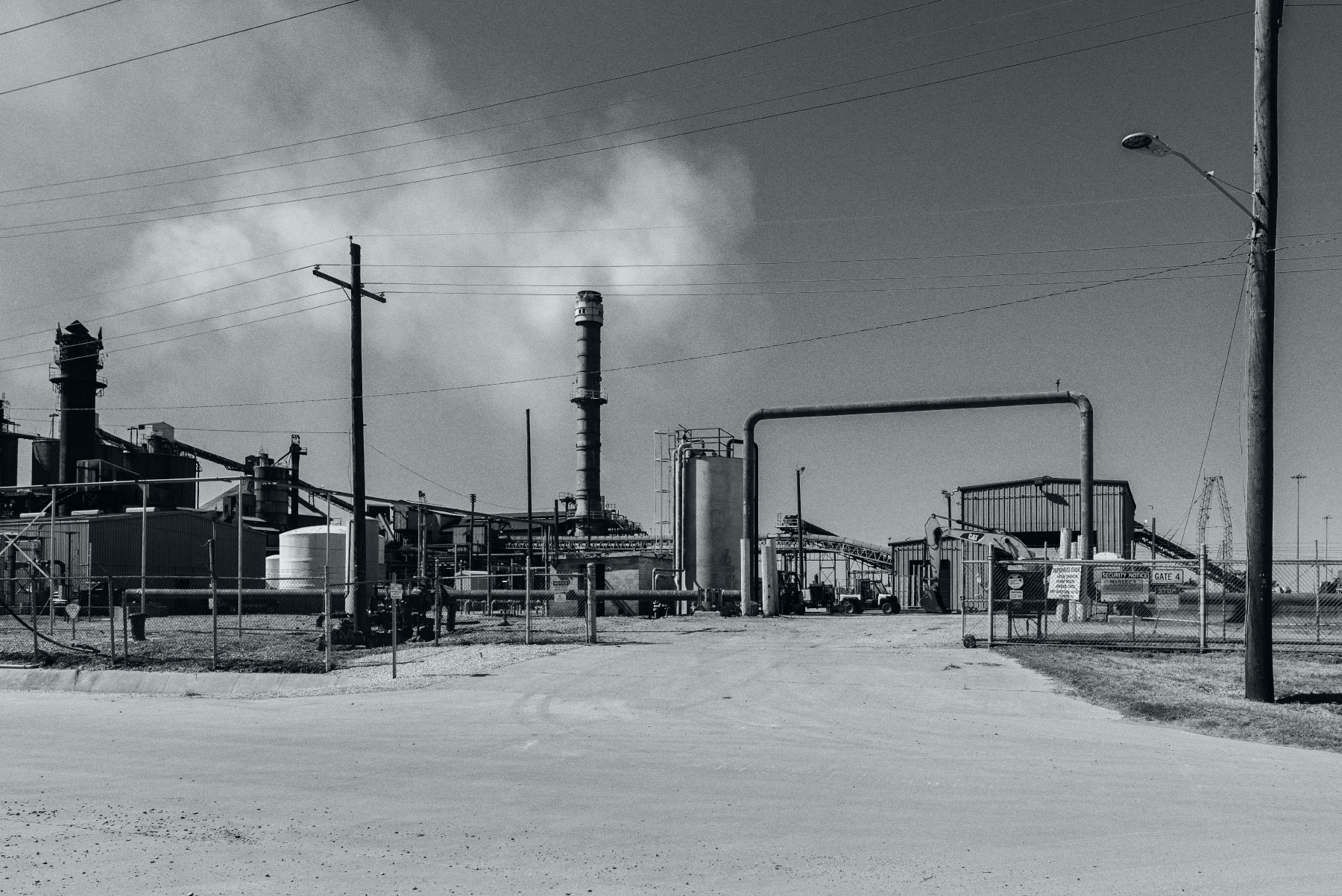
The Port Arthur plant was built in the 1930s and has been grandfathered in as an exception to the landmark federal environmental laws of the 1970s. The facility has four cavernous, cylindrical kilns that are constantly rotating, each about half the length of a football field. Raw petcoke, the bottom-of-the-barrel remainder from refining crude oil, is fed into the kilns and heated to temperatures as high as 2,400 degrees Fahrenheit — a fourth of the temperature of the surface of the sun. The intense heat helps burn off heavy metals, sulfur, and other impurities into the air. It emits more than double the amount of sulfur dioxide, which can cause wheezing and asthma attacks, than the average U.S. coal-fired power plant.
Holtham struggled to find the best way to stop setting off the monitor that January day. At 2 p.m., 12 hours into the ordeal, he increased the air being forced through one of the kilns, in hopes of dispersing the emissions. When that didn’t sufficiently decrease the sulfur dioxide readings, he contemplated shutting down one of the four kilns.
At 6 p.m., he finally turned one of them off. But the damage was already done: A year later when the data from the monitor was reviewed and certified, TCEQ staff would see that the facility had clearly exceeded the federal one-hour standard for sulfur dioxide by nearly 20 percent. The emissions were so high that they set off a monitor more than 2 miles away.
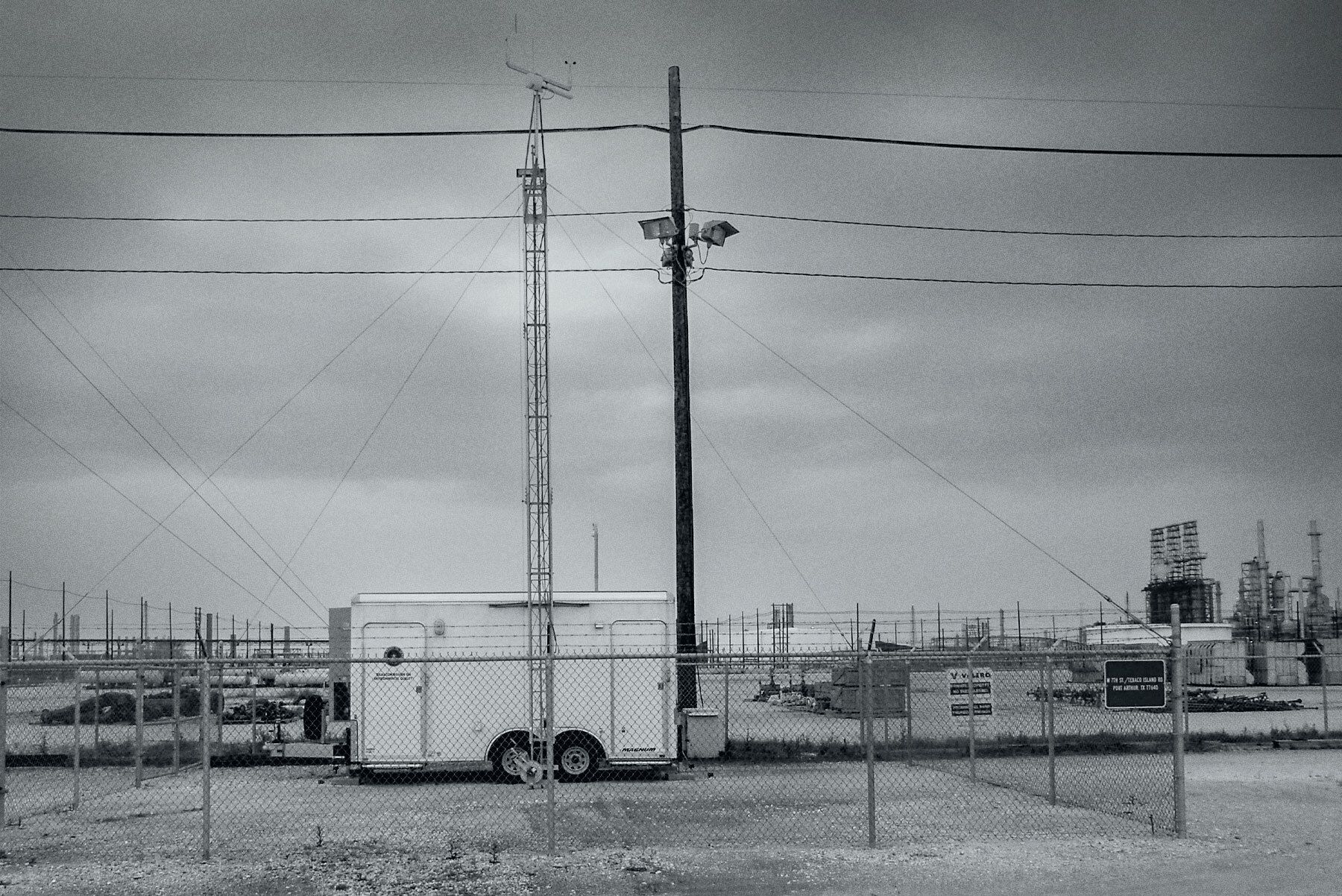
Such exceedances are bound to have an effect on human health. Studies have shown that even short-term exposure to sulfur dioxide can increase the risk of strokes, asthma, and hospitalization. Multi-city studies in China have found that a roughly 4 ppb increase in sulfur dioxide levels is correlated with a 1 to 2 percent increase in strokes, pulmonary diseases, and death. The asthma rate in the residential neighborhood surrounding the plant, West Port Arthur, which is more than 90 percent Black, is 70 percent higher than the national average, according to federal data. And Black residents in Jefferson County, where Oxbow is located, are 15 percent more likely to develop cancer and 40 percent more likely to die from it compared to the average Texan.
In 2017 and the first half of 2018, Oxbow’s emissions often spiked above federal standards by as much as 47 ppb — 62 percent higher than the limit. And all through that time, Holtham and his colleagues continued to improvise. They turned down fans that spewed the emissions into the air, increased the amount of air forced through the kilns, and even tried a chemical treatment. They regularly turned off certain kilns when the sulfur readings at the monitor got too high.
Oxbow has argued that these operational changes were “experiments” that the company conducted to try to bring the plant into compliance. The goal, Oxbow lawyers have said, was to identify a set of operational conditions that would keep them in the good graces of regulators.
Oxbow acknowledges in court records that these “experiments” were conducted for at least a year. But a Grist analysis of 2.5 years of internal operational data shows that, for at least another year, Oxbow’s kiln modifications continued — and occurred primarily when the wind blew in the direction of the air monitor, a likely violation of the Clean Air Act. We spoke to more than 40 public health and environmental researchers, former Oxbow employees, and environmental attorneys and reviewed thousands of pages of legal filings and public records from state and federal agencies. We found that the data Oxbow collected — which was filed in a Texas district court during an unsuccessful suit against the company — show that high winds in the direction of the air monitor predicted decisions to shut down kilns, which reliably led to the monitor registering lower sulfur dioxide levels. About 40 percent of the time, at least one of a subset of kilns were shut down when the wind was blowing to the north.
However, when the wind was not blowing Oxbow’s pollutants toward the monitor throughout this one-year period, the facility did not alter its operations. By ensuring that the monitor was incapable of recording a comprehensive, untampered view of the facility’s emissions, experts say Oxbow flaunted environmental law — in essence, by guaranteeing any air violations would not be detected — and continued to deteriorate air quality in the area.
“There is clearly a criminal violation of the Clean Air Act,” said Joel Mintz, an emeritus professor of law at Nova Southeastern University in Florida and former enforcement attorney with the Environmental Protection Agency, or EPA.
Mintz reviewed Grist’s findings and said that Oxbow’s actions are “fairly egregious” violations of the law. He added that the EPA should open “an investigation with the Justice Department pursuing criminal action.” Presented with Grist’s findings, an EPA spokesperson said the agency “will follow up based on the information” provided.
This chart is called a wind rose. It is a type of diagram used to show the frequency of wind directions at a given location. The length of each bar shows how likely the wind is to blow from that direction.
Longer bars on the bottom, for example, mean the wind blows more frequently from south to north.
From August 2018 to July 2019, wind at the Port Arthur Oxbow facility blew from a variety of directions, but winds blowing from the south to the north were slightly more prevalent.
An air monitor north of the Oxbow facility, which helps measure sulfur dioxide emissions from the plant, is in the path of these south-to-north coastal winds.
Compared to normal conditions, however, we noted that when kilns were shut down during this period in Port Arthur, a more extreme bias emerged in the wind roses. Kilns 2, 3, and 5 at the plant were more likely to be shut down when the wind was blowing from south to north.
We also noted a difference when it came to wind speed. The wider, darker bands in the wind roses indicate an increased frequency of higher-speed winds. Compared to instances in which all kilns were on, these kilns were also more likely to be off during higher southerly winds.
According to the latest public data, Oxbow still emits more sulfur dioxide than any facility in Texas aside from five coal- and gas-fired power plants. One simple but pricey solution is to install sulfur dioxide scrubbers, which run emissions through a slurry of chemicals to mitigate their toxicity. But for at least three decades, in four different states, Oxbow has been trying to outrun environmental regulations that might require this expensive step. Oxbow’s creative use of real-time official regulatory data has not only helped it stay in business — it’s also helped the company rake in an estimated $80 million in sales a year.
The costs of continuing to pollute are felt most acutely by those who live near the plants. The three plants Oxbow currently operates in Texas, Louisiana, and Oklahoma are the largest sulfur dioxide polluters in their respective counties — which combined are home to more than 750,000 people — and taken together emit more than 38,000 tons of sulfur dioxide a year.
“You gotta force air in because it feels like my lungs are closing up. You never get used to it.”
Ronald Wayne, a 65-year-old resident of West Port Arthur.
In 2021, environmental groups and a legal aid firm filed a civil rights complaint against TCEQ, asking the EPA to investigate Oxbow’s use of “dispersion techniques,” including the monitor alert system it set up. The groups also modeled sulfur dioxide concentrations based on Oxbow’s maximum permitted emissions. The model found the maximum concentration around the facility would have been eight times as high as the 75 ppb threshold.
The modeling results “demonstrate that Oxbow is likely emitting [sulfur dioxide] in amounts greater than in its permit,” the complaint claimed. “Without intervention from the EPA, this lax regulation of Oxbow’s operations is likely to continue.”
“They’ve been causing air quality conditions that we now know are harmful to human health since this thing began operating,” said Colin Cox, an attorney with the nonprofit Environmental Integrity Project, one of the groups that filed the complaint.

Brad Goldstein, a spokesperson for Oxbow, called Grist’s review of the company’s data “flawed” and said that the findings are “reckless and unsupportable.” He added that the company is “proud of its compliance record,” emphasizing that the sulfur dioxide readings at the monitors in Port Arthur are consistently below federal standards. “Oxbow values its reputation as a responsible corporate citizen and will vigorously defend it,” he said. Holtham, the plant manager, declined multiple interview requests. (Accounts of his activities are drawn from sworn depositions he provided in court.)
For those like Ronald Wayne, a 65-year-old longtime resident of West Port Arthur, the combined emissions from Oxbow and the town’s other industries have meant never getting used to the stench of sulfur, a rotten-egg smell that just “stink, stink, stink.” He’s woken up to find his car coated in a layer of thin yellow or black dust, and changes the ruined filters on his air conditioner three or four times a month.
Worst of all, he’s become accustomed to waking up in the middle of the night gasping for air. “You gotta force air in because it feels like my lungs are closing up,” Wayne said. “You never get used to it — and then again, there’s nothing you can do about it.”

The rules that Oxbow is required to follow are due to the fact that sulfur dioxide is one of six “criteria air pollutants” listed by the federal Clean Air Act, which requires the EPA to periodically assess them and set safe levels for their concentration in the air.
There’s no question that the act has resulted in tremendous gains in cleaning up the nation’s air. Sulfur dioxide levels nationwide have decreased by 92 percent since the 1990s, and the days of acid rain are well behind us. But in recent years, progress on improving air quality has stalled, if not reversed. Americans experienced more days of “very unhealthy” and “hazardous” air between 2018 and 2021 than anytime in the last two decades.
One reason for the hindered progress is the carve-out that the Clean Air Act of 1970 provided for polluting facilities that were already in operation when it was enacted, including at least two Oxbow facilities. In order to make the legislation politically palatable, these facilities were “grandfathered” in and were able to retain their original emissions limits as long as they didn’t significantly modify their operations. The provision provided a perverse incentive to keep old and dirty plants in operation and delay upgrading them.
Grandfathered facilities also benefit from another facet of the Clean Air Act: its prioritization of the concentration of pollutants, as opposed to volume. Since the Act requires counties to meet specific air quality concentration thresholds, dilution is often the preferred solution, rather than actually reducing the raw volume of pollutants that emerge from industrial processes. Some of these dispersion methods, such as increasing stack heights to legal limits or slowing the rate of emissions, are widely employed and legally permissible. Others, such as changing operations depending on climatic conditions, could be considered illegal.
By its own admissions in court, Oxbow conducted “75 experiments” from January 2017 through June 2018 in order to “see how various operating procedures would affect the dispersion of the plumes.” The “dispersion protocol” that the modeler and others developed involved changing the amount of air fed through the kilns, the amount of coke being processed, and operating temperature depending on one primary atmospheric condition: wind direction.

Such operational changes appear to violate the Clean Air Act under two separate provisions. One section prohibits dispersion techniques that include “any intermittent or supplemental control of air pollutants varying with atmospheric conditions.” Another clause lists penalties including up to two years in prison for any person who knowingly “falsifies, tampers with, renders inaccurate, or fails to install any monitoring device or method required to be maintained or followed.”
Mintz, the former EPA enforcement official, said that Oxbow’s activities appear to be in violation of these provisions. “They have knowingly rendered inaccurate their device,” said Mintz. “If they had some sort of permission from the government to experiment as they did, that might be a defense, but doing it unilaterally, I don’t think so. It would be up to a court to decide, but I don’t think that should be, in my judgment at least, a basis for not prosecuting them.”

Bill Koch is the lowest-profile of the famously wealthy Koch brothers. Known for their outsized role in Republican politics and helping gut government action on climate change, the Kochs have collectively given millions to conservative causes. But Bill Koch’s most public endeavors thus far have been his vendettas against those who have sold him counterfeit wine. He claims to have spent $35 million tracking down counterfeiters, including when a con man sold him four bottles allegedly owned by Thomas Jefferson for over $400,000.
When he’s not chasing after con artists, Koch runs Oxbow’s industrial empire, which operates a coal mine in Colorado and coke plants in Argentina, Texas, Louisiana, and Oklahoma. New environmental regulations have periodically led Oxbow to consider installing sulfur dioxide scrubbers at its coke plants, but for decades it found alternate ways to comply.
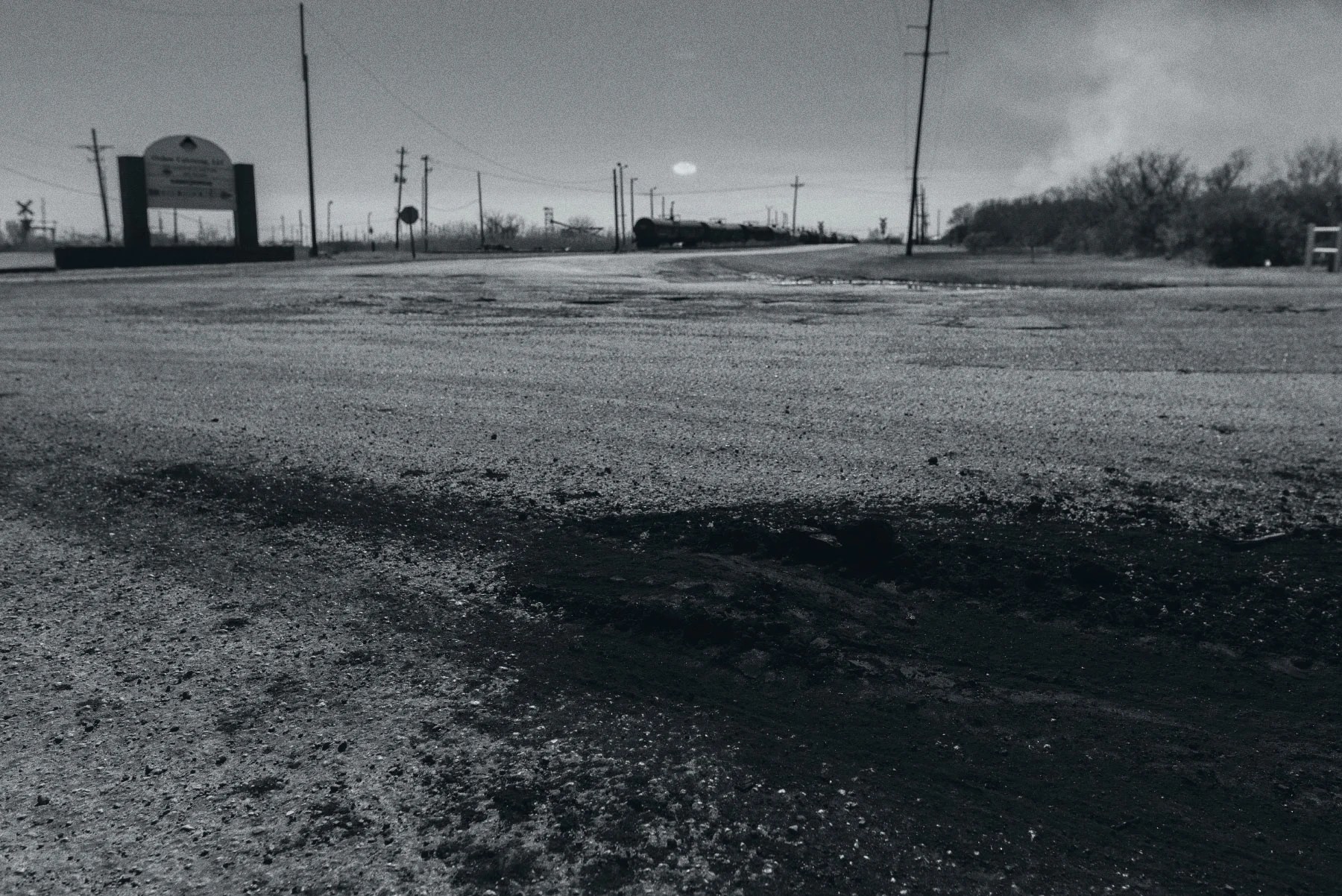
In 2010, however, the EPA dropped a bombshell by lowering the limit for ambient sulfur dioxide concentration from 140 ppb averaged over 24 hours to 75 ppb averaged over one hour. The rule, which withstood multiple legal challenges from industry, required that states draw up a list of the top sulfur dioxide emitters and require them to prove their emissions could stay within the new limits. At the time states began to implement the EPA’s plan, Oxbow operated plants in Illinois, Texas, Louisiana, and Oklahoma. In all four states, the company was shortlisted as a major sulfur dioxide polluter.
Oxbow’s plant in Lemont, Illinois, had already been the target of multiple EPA inspections and enforcement actions. It emitted as much as 7,000 tons of sulfur dioxide a year and was using an expired permit that appeared to cap emissions around half that. A monitor about two miles away was recording readings close to or above 100 ppb, which put it in the EPA’s and state’s crosshairs when the new sulfur dioxide rules took effect.
Oxbow had considered scrubbers but found they would cost north of $50 million — “not in the cards economically,” an executive would later recall. Given that it had about 30 percent extra capacity at its other plants, Oxbow shuttered the Lemont plant that year and spread its operations among the company’s other three locations.
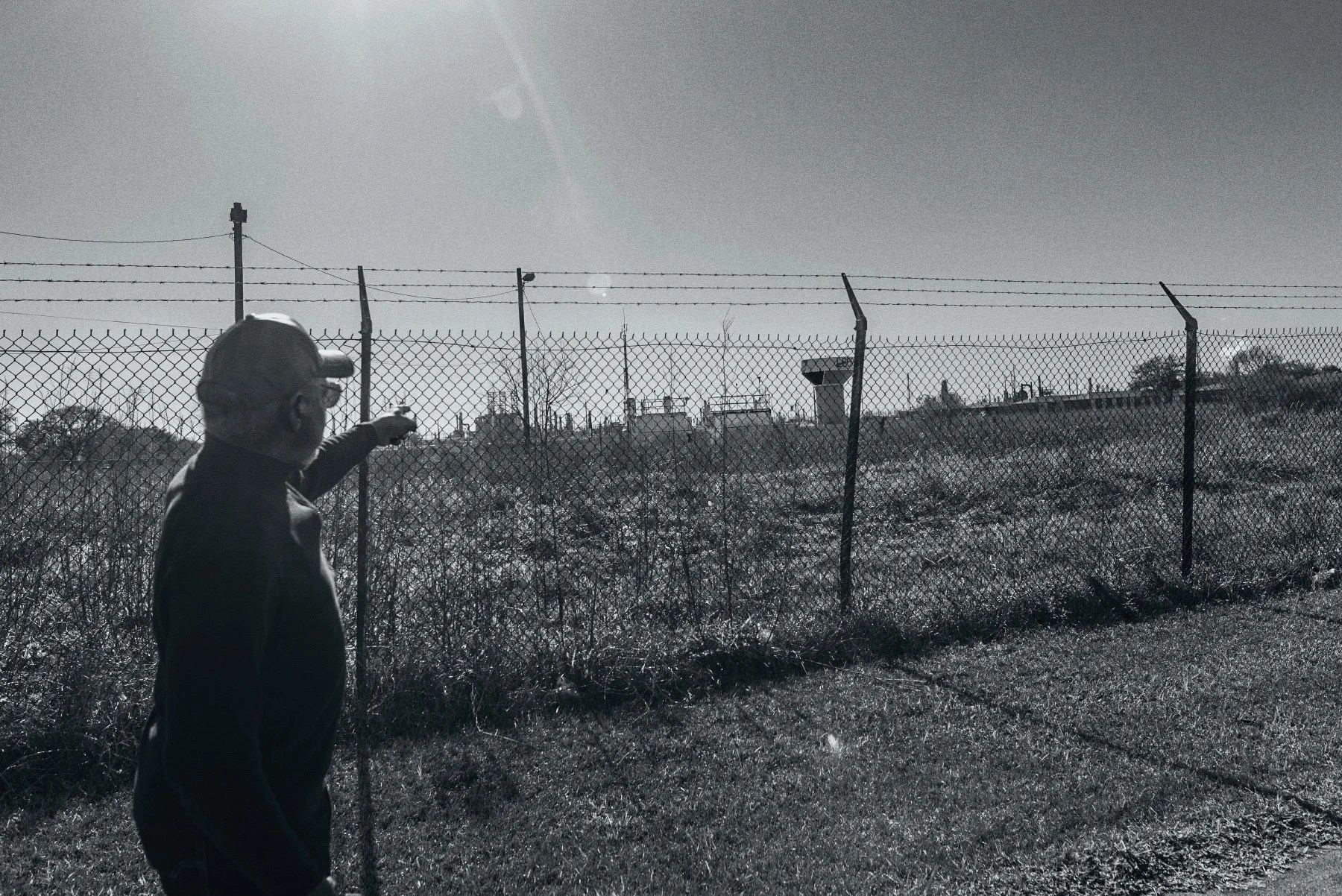
Unwilling to put scrubbers in its other facilities as well, citing costs, Oxbow attempted to prove through its own modeling that its other plants could stay below the new 75 ppb standard. It’s unclear what the company’s internal modeling found, but Oxbow abandoned the effort in 2016 and elected to have state agencies place monitors near its plants instead. As David Postlethwait, the former plant manager of Oxbow’s facility in Baton Rouge, Louisiana, later put it, executives believed “the air models tend[ed] to overestimate emissions” and monitoring with “real data” would be more reliable. Modeling is the cheaper option — for both Oxbow and the state agencies. Monitors cost hundreds of thousands of dollars to purchase, install, and operate. Oxbow bore some of those costs.
The EPA must collect three years of data to determine compliance — meaning monitors bought the company at least three more years to comply with the rule. It was a common strategy: Of the 25 Texas facilities that were at risk of violating sulfur standards, more than half elected to show compliance through monitoring data.
As the state agencies in Texas, Louisiana, and Oklahoma purchased the monitors and decided where to install them, Oxbow set up a task force that came up with sophisticated software to track the monitors’ readings. Although the monitors were continuously recording sulfur dioxide readings every minute, the state environmental agencies at the time were only posting one-hour averages on the website. Oxbow wanted close-to-real-time data and negotiated access to directly download readings at five-minute intervals from the monitors. It could take up to 30 minutes before the readings reached Oxbow servers, but it provided enough of a lead time for plant managers to track when sulfur dioxide levels were ticking up.
Oxbow employees then gathered meteorological data — specifically wind direction and wind speed — and added it to the software that was recording the monitor readings. A number of plant managers, environmental engineers, and executives were given access to the data, and the software sent them emails when the wind was blowing in a 30-degree band over the monitor and recorded levels above a set threshold. The company replicated the system for its facilities in Louisiana and Oklahoma, similarly negotiating access for five-minute data from the respective state environmental agencies.
The fact that employees had spent months setting up this software was no secret. A senior Oxbow employee provided updates to Bill Koch. A December 2017 memo to Koch, made public in court filings, noted that employees were running “dispersion testing under various preselected scenarios for each facility when conditions warrant.”
Control room operators started noticing changes, too, once the monitors were installed. Milton Fuston, who was the main operator at the plant in Enid, Oklahoma, said that he received calls from a supervising engineer telling him to reduce the amount of coke being fed through the plant or to make other operational changes to reduce emissions. Some of these calls came during his night shifts, he said, when the engineer wasn’t at the plant. It led Fuston, who worked at the plant for more than a decade before leaving in 2019 when the long and taxing shifts began taking a toll on his body, to believe that the monitor readings were driving the changes.
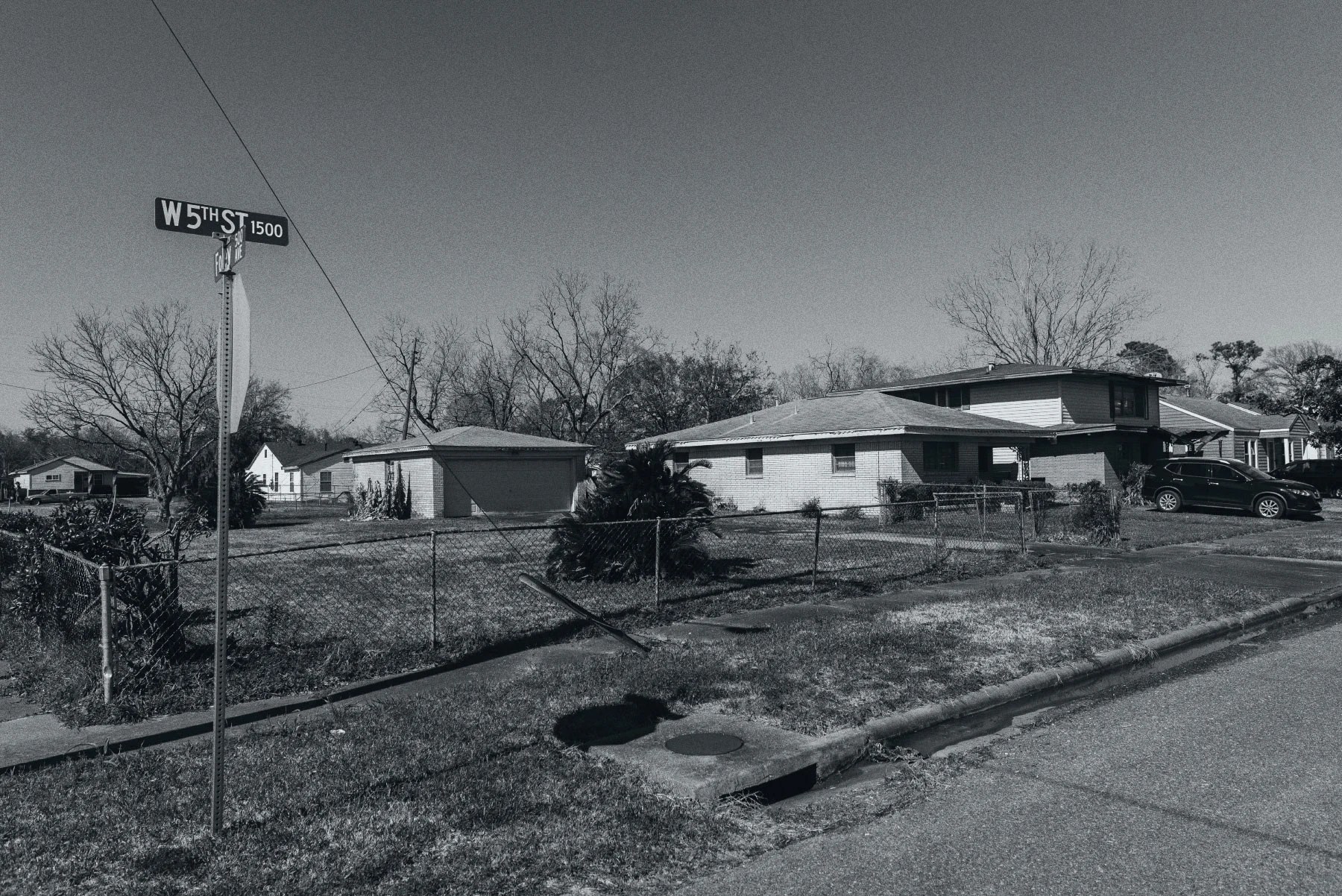
“In the beginning, every one of my nights I’d get a call to shut it down,” Fuston told Grist, though he added that he wasn’t directly told about a strategy to avoid pinging the monitor. “Some days we’d go three days of shutting it down. [Other days they’d] let us spin, shut it down, let us spin, shut it down.”
Kurk Paul, who worked as a production supervisor at the Baton Rouge plant, recalled having to field complaints about the dust coming from the plant. Chad Sears, who worked at the Oklahoma plant, said the emissions were so thick that a public pool nearby was often covered in a layer of dust. Oxbow, he said, was paying for pool cleanup as a result.
“When you’re on the highway driving there in the summer, there’s so much dust and smoke in the air, it looks like the whole place is on fire,” Sears said. “It’s like a black hole.”
The clearest picture of Oxbow’s operations emerges in Port Arthur, where the company was sued by a contractor. Since the superheated coke has to be cooled down before it can be shipped off to customers, Port Arthur Steam Energy, or PASE, saw a business opportunity to capture the excess heat, use it to generate steam, and sell the steam to a nearby Valero refinery. A portion of the profits was to be shared with Oxbow. For many years it seemed like a win-win deal — and perhaps an efficient and even “green” process, since it used energy that otherwise would have gone to waste.
But the contractual relationship between Oxbow and PASE soured in 2017 after TCEQ installed the monitor. Oxbow claimed PASE’s operations were to blame for the Port Arthur plant’s high sulfur dioxide readings. The company said that when PASE captured the stream of hot gases as the coke was being processed and cooled it down, the emissions were released from its smokestacks at lower temperatures. As a result, the emissions were less likely to disperse into the air and more likely to be picked up by the monitor for exceeding limits. Oxbow ended its contract with PASE in June 2018 as a result, effectively running PASE out of business.
“They just killed this green-air process,” Ray Deyoe, one of the co-founders of PASE, told Public Health Watch and the Investigative Reporting Workshop. “Just because Bill Koch didn’t want to go sell one Picasso or one of his Billy the Kid statues or whatever to pay for his scrubbers in Port Arthur.” PASE sued, alleging that Oxbow had been trying to “game the monitor.”
PASE initially won in a Jefferson County court but lost the appeal. The companies then proceeded to arbitration, where a panel of former judges ruled in Oxbow’s favor, ordering PASE to pay administrative fees and $500,000 plus interest. When PASE appealed the judgment in a Harris County district court, it lost. While these proceedings bankrupted PASE, the litigation provides an incredibly detailed window into Oxbow’s operations. The discovery process and depositions led to Oxbow handing over thousands of pages of internal documents. Key among them is a spreadsheet of the five-minute data Oxbow collected from TCEQ’s monitor alongside information about whether each of its four kilns were on at any given time. The spreadsheet, which was filed in the Harris County court, contains wind direction, wind speed, sulfur dioxide monitor readings, and kiln behavior information at five-minute intervals from January 2017 through June 2019.
Grist analyzed the dataset from August 2018, after Oxbow ended its contract with PASE, to July 2019. We found that winds blowing north, high wind speeds, and periods in which the winds were shifting toward the monitor predicted shutdowns.
When we looked at monitor readings 24 hours before and after a kiln was shut down, we found that readings tended to spike in the 24 hours following a shutdown decision, while they were relatively stable in the preceding 24 hours — suggesting that shutdowns were executed in advance of known changes in environmental conditions.
Oxbow’s operations in March 2019 are particularly illustrative. Even with just two kilns operational, the readings began ticking upward in the early hours of March 8. That morning, Oxbow reduced the feed into two of the kilns by two tons per hour — but it seemed to make no difference. By lunchtime Oxbow had registered five-minute readings above 75 ppb even though by then it was operating at just 25 percent of its average capacity.
Nevertheless, ultimately the maneuvering worked. The wind changed direction, and the readings dropped enough to lower the average that would determine compliance. When the state regulator eventually crunched the numbers, it reported the highest one-hour average for March 8 as 49.2 ppb — well below the federal threshold.
In response to detailed questions about Oxbow’s operations in March 2019 and Grist’s analysis, Goldstein, the Oxbow spokesperson, said that the company “sees no reason to relitigate our previous dispute with PASE for your purposes.”
“The case is now closed,” he said. “Oxbow prevailed and the entire file is a matter of public record. The answers to your questions can be found at the courthouse.”

States have few incentives to intervene when allegations of gaming air monitors surface. After PASE executives dragged Oxbow into court, they met with TCEQ staff to explain how they believed the company was cheating the monitor. But nothing came of the meeting; TCEQ didn’t investigate whether Oxbow was using the data inappropriately.
“TCEQ was trying their best to get through this monitoring program and sort of sweep all of this under the rug,” said Ray Deyoe, a PASE co-founder. “Because here we are squealing about this … and instead of helping us and going in and really doing something about it, it just seemed like they were turning a blind eye.”
TCEQ continues to provide five-minute monitoring data to Oxbow. The agency told Grist that the information is public and available to anyone who seeks it — it’s just that no other company in Texas has.
High monitor readings spell trouble not just for Oxbow but the entire county, TCEQ, and the state. When the EPA finds that a county is in “nonattainment” of a certain ambient air quality standard, it requires the state to come up with a plan of action to cut pollution. The state environmental agency in turn typically requires polluting facilities in the entire county to reduce emissions, a costly and time-consuming endeavor. The process of developing such a plan is also expensive, taking up a significant amount of resources within the agency and racking up employee work hours. And if states don’t come up with a sufficiently stringent plan, the EPA can take over and withhold federal funding.
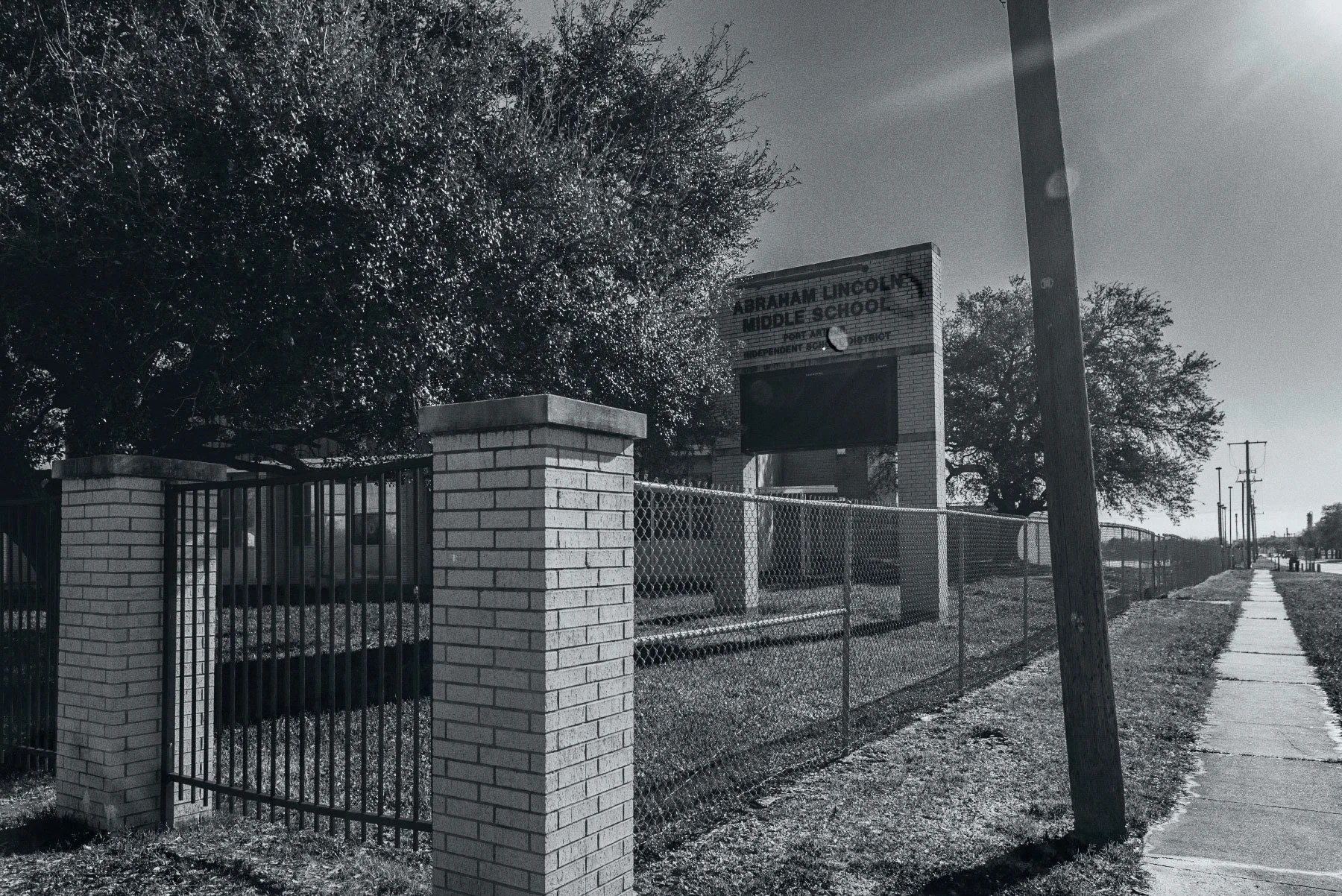
Louisiana appears to have followed Texas’ lead. The state Department of Environmental Quality did not respond to specific questions about the access that it gave Oxbow to monitoring data, but internal emails, available through court records, between Oxbow employees confirm that the company was able to access near real-time monitoring data for its Louisiana plant as well. During this time, the monitor did not register any sulfur dioxide levels above 75 parts per billion, and after three years of monitoring, the Louisiana environmental agency decommissioned the monitor and Oxbow was found to be in compliance with the air quality standard.
In Oklahoma, where Oxbow operates a calcining facility in Kremlin, roughly 100 miles north of Oklahoma City, regulators took a different tack. Initially, the Oklahoma Department of Environmental Quality, or DEQ, granted Oxbow the ability to access monitoring data directly. But a few months into the arrangement, the agency received an anonymous complaint that the company was using the data to change its operations such that it didn’t set off the monitor. As a result, the agency ended Oxbow’s access to the monitor.
“In order for DEQ to continue to certify to EPA that the data being gathered by the monitor is accurate and depicts the true [sulfur dioxide] levels that exist and will exist in the future, DEQ has determined that it can no longer provide five-minute data to Oxbow via the .csv link,” the then-air quality director wrote to Oxbow executives. A spokesperson for the agency told Grist that it never restored the company’s access. “No entity currently receives five-minute data,” the spokesperson said.

At more than 150 feet tall, Oxbow’s massive smokestacks stick out like beacons in the industrial corridor in Port Arthur. The yellowish-brown plume from the plant carries far and wide. When the cloud cover is low, the emissions stagnate, forming a sulfurous haze around the plant. Sometimes the stench is so strong that Hilton Kelley, a Goldman Environmental Prize winner and local activist, can smell the sulfur when he steps out of his restaurant, Kelley’s Kitchen, almost three miles away.
“It smells like somebody is tarring their roof,” Kelley said. “It can make your throat itchy and can make your eyes burn.”

Exactly how far the pollution is carried depends on a number of factors including the height and diameter of the stacks. The taller a stack, the farther the plume drifts. Tall stacks, a 2011 Government Accountability Report found, increase the distance that pollutants travel and harm air quality in regions further away. They do nothing, of course, to decrease the amount of pollution spewed into the air. Rather, taller stacks are a dodge to reduce the concentration of pollutants while doing nothing to decrease their magnitude. As a result, stack heights have risen steadily over the years.
The Port Arthur plant has had its stacks raised at least twice in the last few decades, once in 2005 before Oxbow’s purchase of the plant and again in 2018, when Oxbow found that the plant was violating sulfur dioxide limits. Holtham, the plant manager, notified TCEQ in September that Oxbow was replacing one of its stacks with a new structure that would be 20 feet taller — and almost three feet narrower, another strategy that forces emissions out higher into the air. The change “will provide additional loft of the plume” and “provide better dispersion from the Kiln 4 stack which will lower off-property ambient concentrations of air contaminants,” Holtham wrote. Oxbow’s stacks are now among the tallest in Texas, according to a Grist analysis of nearly 10,000 stacks at similar industrial operations.
Replacing the stack had a marked effect on the “experiments” that Oxbow was running. In 2017 and early 2018, prior to replacing the stack, Kiln 4 exhibited a similar shutdown bias to the other kilns when the wind blew in the direction of the monitor: It was down 11 percent of the time when the wind was blowing north (versus 8 percent for other wind directions). But in 2019, after the stack was raised, any such correlation between wind direction and whether the kiln was on disappeared. The overall wind-direction distribution at the site didn’t change, but after its replacement, Kiln 4 was virtually never shut down during periods when the wind blew in the direction of the monitor.
Oxbow continues to argue against installing scrubbers in filings with state regulators. Over the last couple years, states have been developing plans to reduce smog in national parks, and Oxbow’s facilities have been flagged as a major contributor to regional haze in all three states they operate in. The environmental agencies in Louisiana and Oklahoma required the company to conduct a “four-factor analysis” investigating different equipment that would reduce emissions, the cost of compliance, and any environmental impacts not related to air quality that may result. In Oklahoma, Oxbow claimed all three options that it explored were “economically infeasible.” In Louisiana, it claimed installing scrubbers would cost at least $88 million a year. And Texas’ plan to reduce regional haze left Oxbow out even though the Port Arthur plant releases more than 10,000 tons of sulfur dioxide a year, making it one of the largest polluters in the state.
Residents who live around the Oxbow facilities have been complaining about its pollution for years. Brannon Alberty, a pediatrician, first called the Louisiana Department of Environmental Quality, or LDEQ, about Oxbow in 2016. Alberty grew up in Baton Rouge and was used to seeing plumes spewing from smokestacks. But the plume from Oxbow’s facility was different. It had a hazy orangish-brown color and was bigger than anything he’d seen from any other facility in the area. Driving home from work on Highway 61, Alberty saw the plume multiple times a week.
“I’m not like an environmentalist or anything like that, but it’s just one of those things that clearly anybody can look at and say, ‘This isn’t right,’” he said.
Between 2016 and 2018, Alberty called LDEQ to report the plume multiple times. Each time, LDEQ checked the facility’s monitoring records and told him the company was operating within the limits established in its permit. Fed up, Alberty called local TV stations and newspapers. He called the EPA, and he even tried to get his neighbor, an attorney, to see if there was a class action lawsuit that could be filed. Eventually, Alberty decided to look at the health data he had access to at his hospital. He found that ER visits and asthma rates in the ZIP codes in and around Oxbow were two to three times higher than the rest of the state.
Armed with this information, he called the state epidemiologist’s office and flagged the numbers for them. The state health agency took his complaint seriously and in 2019 published a report on the childhood asthma rate in East Baton Rouge. The report doesn’t list Oxbow as the cause for higher asthma rates, but in a map of industrial facilities in the area, the company is named.
Like Alberty, John Beard has been complaining about Oxbow’s emissions in Texas for years. Beard, a local activist and executive director of the Port Arthur Community Action Network, has testified in front of the state legislature and shown up at TCEQ permit hearings, advocating for stricter emissions limits on Oxbow and other polluters. Most recently, Beard teamed up with an environmental group and a legal aid firm to petition the EPA to examine TCEQ’s decisions to renew two permits. The EPA sided with the environmental groups last year in one of the cases and has directed TCEQ to reexamine Oxbow’s recordkeeping and air quality monitoring requirements. The groups have also filed a separate civil rights complaint against TCEQ over Oxbow’s emissions with the EPA.
Specifically, the complaint requests that the agency look into TCEQ “tacitly approving Oxbow’s dispersion techniques,” by failing to investigate the company’s practices. The complaint has since been accepted by the EPA and the agency is currently investigating.
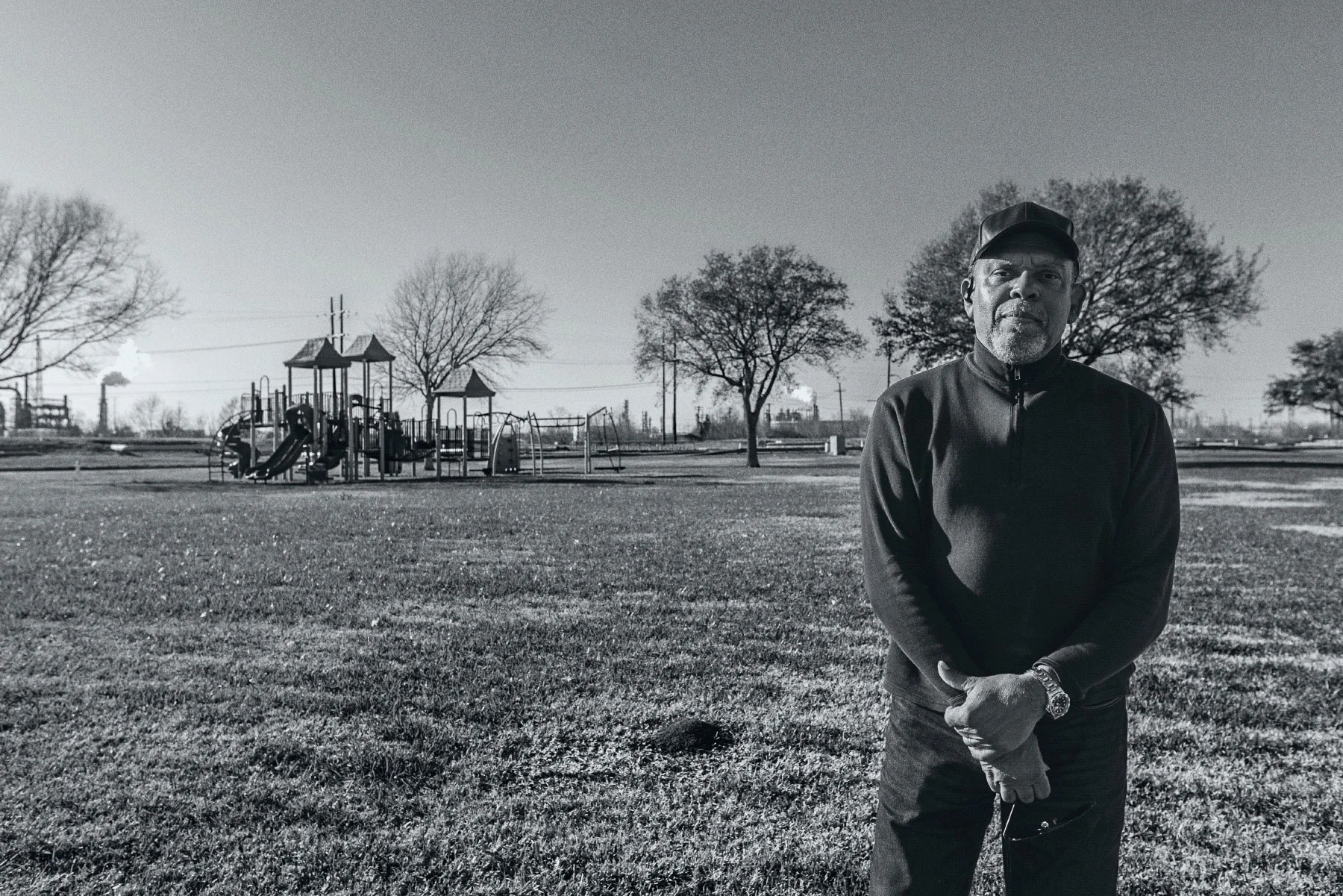
Oxbow did not respond to specific questions about whether it continues to run such experiments to this day. The data submitted to the court cover the company’s operations from January 2017 through June 2019. In a deposition in November 2019, Holtham, the plant manager, said that the company was still running experiments based on wind direction and other parameters because “we still have emissions” and “we want to find out what process parameters” to run in order to operate on a permanent basis.
According to TCEQ, the agency continues to provide near-real-time monitoring data to Oxbow. At the very least, Oxbow made operational changes based on wind direction from 2017 through half of 2019. If those experiments continue to this day, it raises serious questions about the validity of the monitoring data that the EPA relied on to certify Jefferson County’s air quality. In 2021, after examining air quality data from 2017 to 2020, the EPA declared that the county was in compliance with the sulfur dioxide standard.
Nevertheless, over his decades of advocacy on behalf of Port Arthur residents, Beard has come to identify Oxbow as a “serial polluter.”
“If you came to Port Arthur, walk the streets and you ran into someone and you ask them, ‘Do you know of anyone who either had cancer, died from cancer, [is] currently undergoing treatment, or has been treated for cancer,’ you will not find a single person of adult age who will tell you they don’t know of anybody in this whole city,” he said. “That’s scary. In a city of 55,000, that’s scary.”
Methodology
Grist modeled the effects of wind direction and wind speed on Oxbow’s Port Arthur plant’s operational data using several related methods. First, we established baseline linear relationships between kiln states (whether each of the four kilns was on or off), meteorological variables (wind direction, speed, and peak-gust magnitude), and sulfur-dioxide readings in order to determine mean effects of kiln status and wind on measured sulfur dioxide, irrespective of temporal variables. We also computed frequency distributions and frequentist statistics of wind conditions for each kiln state, comparing periods in which kilns were off to periods in which the plant was fully operational.
Next, given our understanding of the baseline relationships, we sought to statistically model kiln status as a function of wind conditions and measured sulfur dioxide (as well as their variances and first derivatives). Because of the temporal correlation in our dataset — that is, because our measurements were taken in five-minute intervals and thus did not vary widely from consecutive point to consecutive point — we downsampled our data to an hourly resolution, and then again with temporal windows of random length, to eliminate the correlation in question. With our downsampled data, we built a cross-validated random forest model, in which a classification algorithm is trained on random subsets of the data in order to eliminate overfitting bias. Detailed methods, code, and data are available on GitHub.
This story was reported and written by Naveena Sadasivam, with Clayton Aldern contributing data reporting. Amelia Bates illustrated original artwork, and Jessie Blaeser conducted data visualization. Still photography for the story was done by Jacque Jackson. Amelia Bates and Jason Castro handled design and development. Megan Merrigan, Angelica Arinze, and Mignon Khargie handled promotion. Rachel Glickhouse helped with partnerships.
This project was edited by Grist features editor John Thomason, executive editor Katherine Bagley, and deputy editor Teresa Chin. Joseph Winters handled copy-editing. Paco Alvarez contributed fact checking.
It is published in partnership with the Houston Chronicle and Beaumont Enterprise. Many thanks to the Fund for Investigative Journalism, which supported the project.